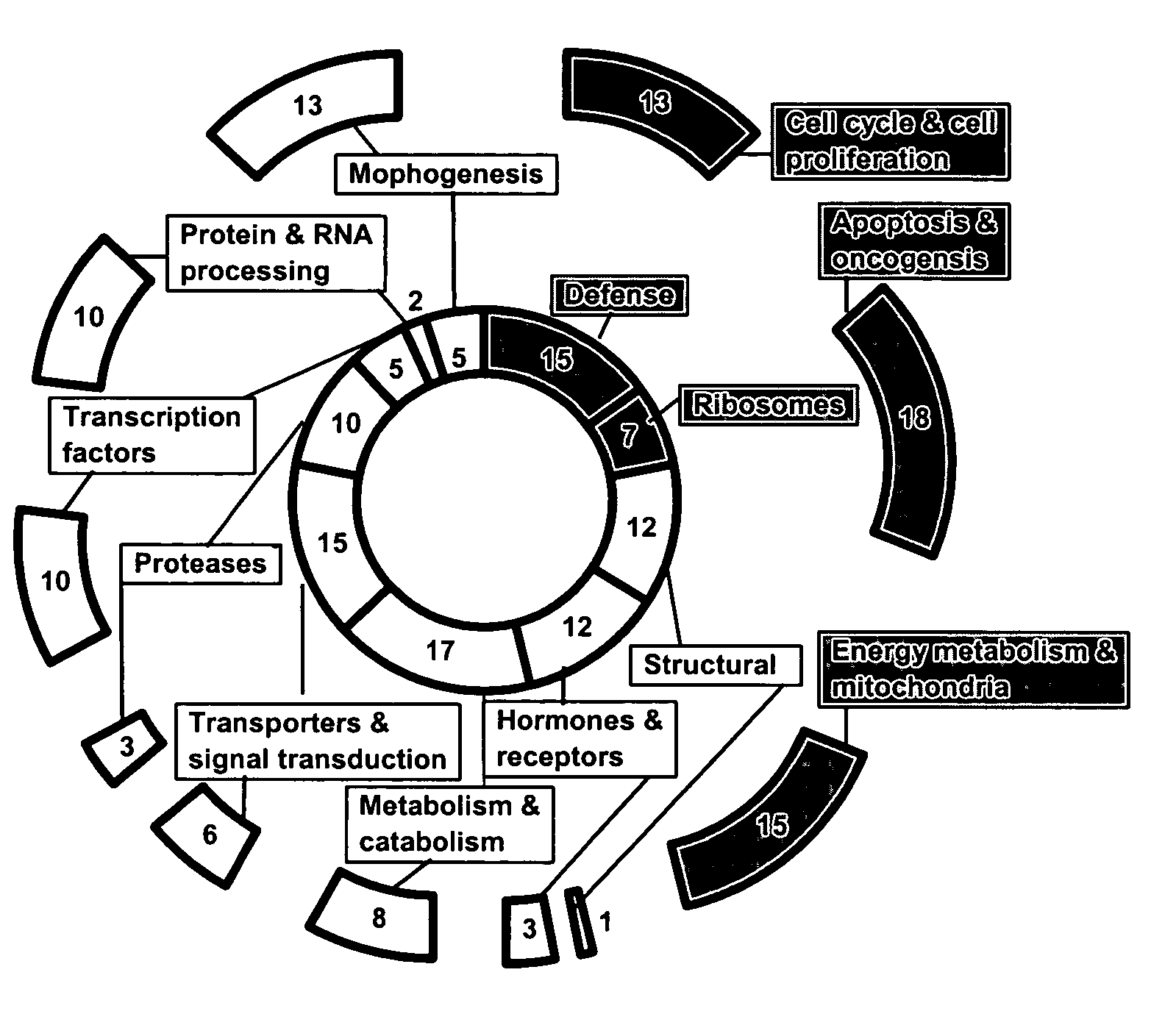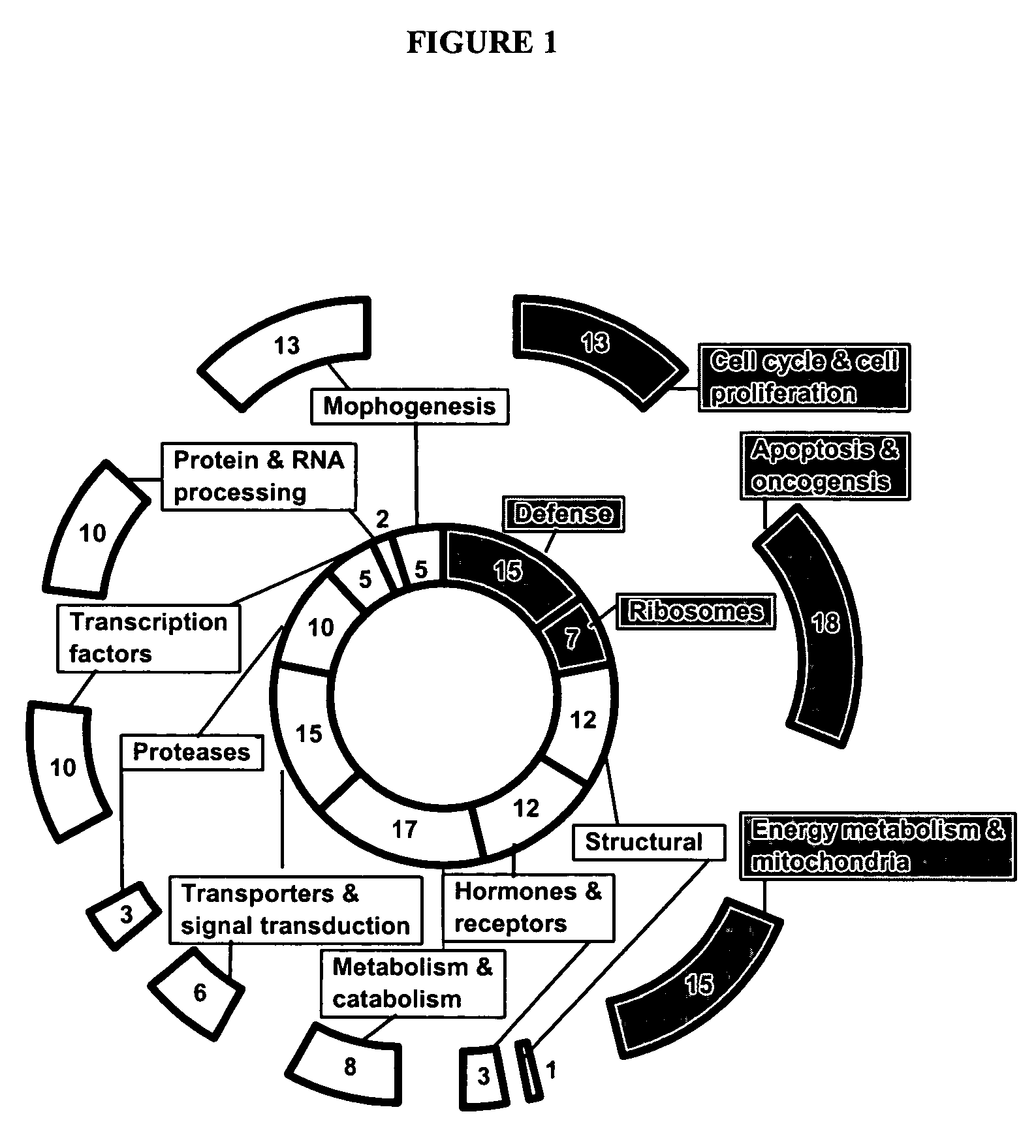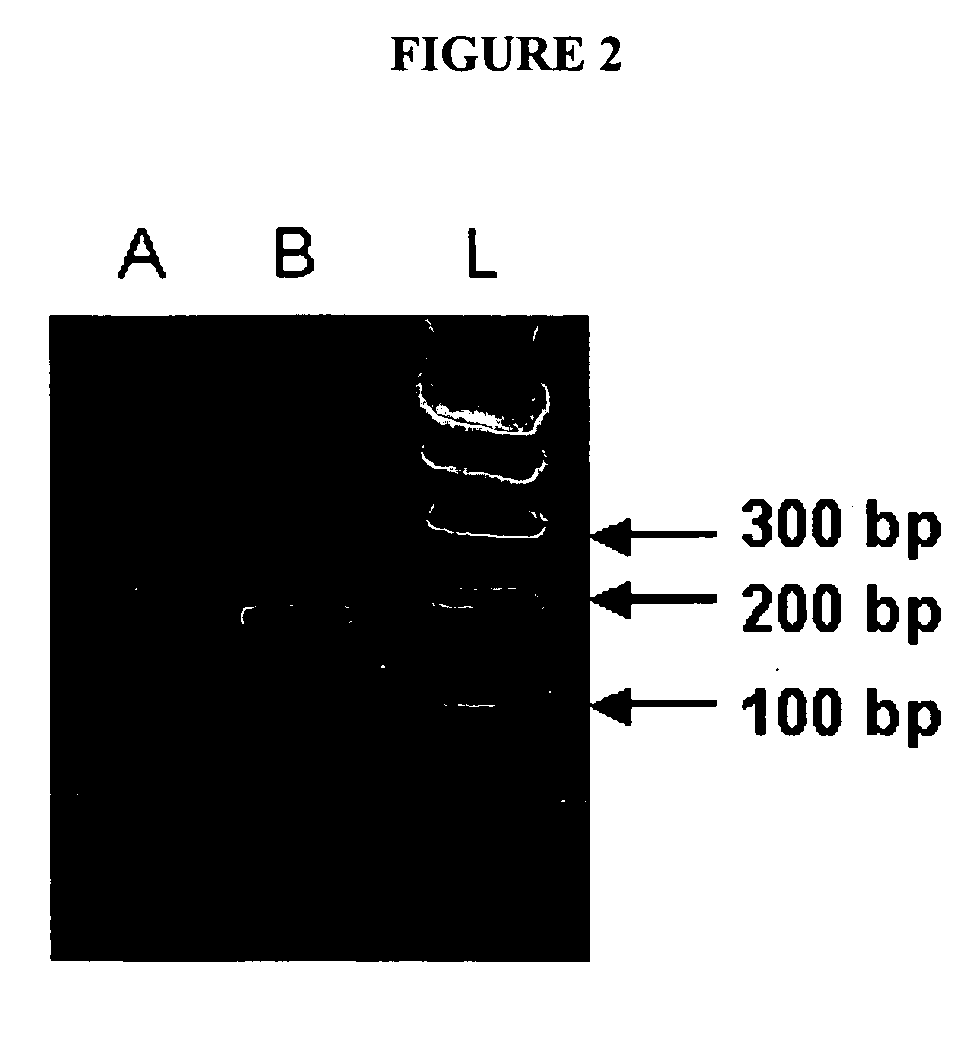Compositions and methods for determining oocyte development potential
a technology of oocytes and oocytes, applied in the field of reproduction, can solve the problems of poor oocyte quality, low chance of success in becoming pregnant using art, and less competent oocytes of older women, and achieve the effect of reducing the amount of labeled a bound
- Summary
- Abstract
- Description
- Claims
- Application Information
AI Technical Summary
Benefits of technology
Problems solved by technology
Method used
Image
Examples
example 1
Materials And Methods
[0182] Experiments conducted during the development of the present invention were approved by the Institutional Review Board at Northwestern University. Cumulus cells were collected for this study from patients who consented to participate. The patients went through standard IVF treatment that included gonadotropin administration to induce multiple follicular development and trans-vaginal oocyte aspiration. Details of the IVF treatment have been described (See, e.g., Chen et al.,. Fertility & Sterility. 80:75-9, (2003)).
[0183] Cumulus cells. After the oocyte-cumulus complexes were aspirated from ovarian follicles and identified under dissection microscope, cumulus cells were removed from the oocyte with 24-guage needles. The oocytes were cultured individually under appropriate culture conditions for fertilization in vitro (See, e.g., Chen et al.,. Fertility & Sterility. 80:75-9, (2003)). Fertilization and subsequent embryo development for each oocyte was recor...
example 2
Gene Expression Profiling By Microarray Analysis
[0192] The first replicate analyzed cumulus cells from nine patients (one cycle for each patient), with 32 cumulus complexes in Group A and 23 in Group B. The cause of infertility was tubal disease for two patients, endometriosis for one and unexplained for the rest of the nine patients. In the second replicate, cumulus cells were collected from 11 patients (one cycle per patient), with 43 cumulus complexes in Group A and 25 in Group B. The cause of infertility was tubal disease for one, endometriosis for two patients, polycystic ovarian syndrome for two, and unexplained for the other six patients. Some of the embryos corresponding to Group B were transferred in the same cycle and others (surplus after transfer) were cryopreserved for future use. Twelve clinical pregnancies (e.g., via observation of fetal heart beats) resulted from the 20 IVF cycles, similar to the overall pregnancy rates in the IVF center during the development of th...
example 3
Pentraxin-3 Expression
[0194] Sixteen cumulus complexes from three patients (cause of infertility was unexplained for all three) were subjected to reverse-transcription PCR to confirm the presence of Ptx3 mRNA in human cumulus cells (See FIG. 2). The authenticity of the amplification product was verified by cloning and sequencing.
[0195] Real-time PCR was then employed to determine the relative abundance of Ptx3 mRNA in 98 cumulus complexes from 16 patients (See FIG. 3). The cause of infertility was tubal disease for two patients, endometriosis for two, polycystic ovarian syndrome for three and unexplained for the rest of the 16 patients. Compared with cumulus cells from unfertilized oocytes, cumulus cells from fertilized oocytes had 3- to 12-fold increases in the relative abundance of Ptx3 mRNA.
[0196] In order to further assess the correlation between Ptx3 expression in cumulus cells and the development potential (e.g., implantation potential) of the fertilized oocytes / embryos, fe...
PUM
| Property | Measurement | Unit |
|---|---|---|
| energy metabolism | aaaaa | aaaaa |
| three-dimensional structure | aaaaa | aaaaa |
| structures | aaaaa | aaaaa |
Abstract
Description
Claims
Application Information
 Login to View More
Login to View More - R&D
- Intellectual Property
- Life Sciences
- Materials
- Tech Scout
- Unparalleled Data Quality
- Higher Quality Content
- 60% Fewer Hallucinations
Browse by: Latest US Patents, China's latest patents, Technical Efficacy Thesaurus, Application Domain, Technology Topic, Popular Technical Reports.
© 2025 PatSnap. All rights reserved.Legal|Privacy policy|Modern Slavery Act Transparency Statement|Sitemap|About US| Contact US: help@patsnap.com



